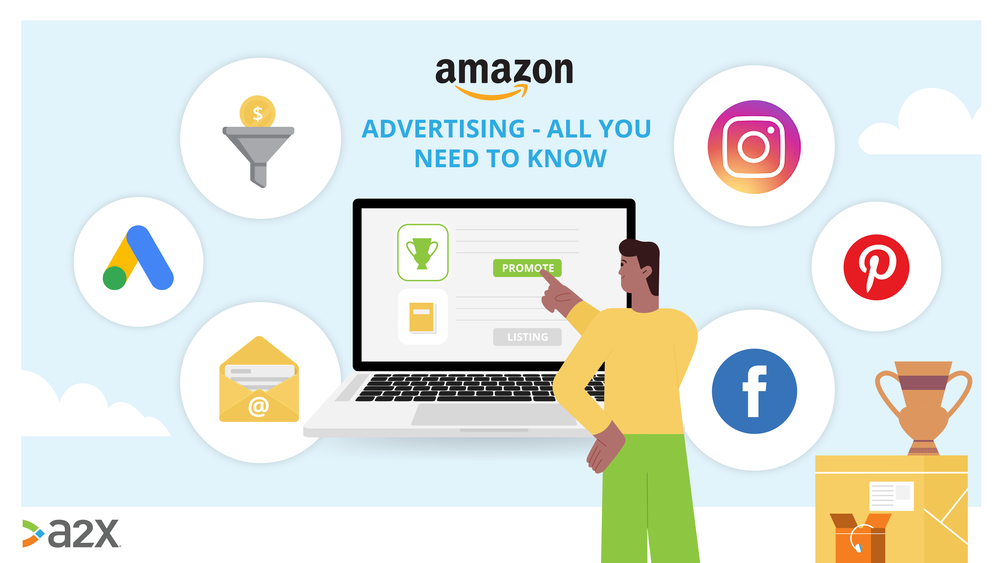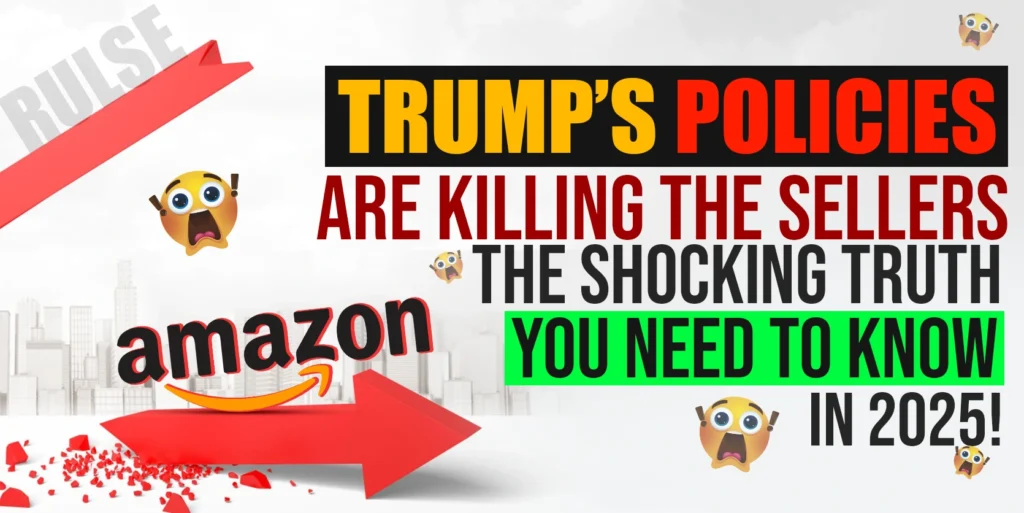Selling on Amazon has become synonymous with success in e-commerce. With its massive customer base and logistical prowess, Amazon attracts millions of sellers aiming to capitalize on its platform. However, Amazon fees for selling can significantly impact profitability. This article explores these costs in detail, sheds light on how they affect sellers, and provides insights into navigating Amazon’s complex fee structure.
Table of Contents
- Introduction: Understanding Amazon Fees
- What Are Amazon Fees for Selling?
- How Much Are Amazon Fees for Sellers?
- Hidden Amazon FBA Fees and Their Impact on Sellers
- Why Are Amazon Fees Rising?
- How Amazon Fees Affect Consumers
- Amazon’s Monopoly Tactics: A Deep Dive
- FTC’s Antitrust Lawsuit Against Amazon
- Strategies for Sellers to Navigate Amazon Fees
What Are Amazon Fees for Selling?
At its core, Amazon charges sellers various fees for using its platform. These fees cover services like storage, shipping, advertising, and more. While Amazon provides the tools to reach a vast audience, the associated costs can erode profits if not carefully managed.
Types of Amazon Fees
1. Referral Fees: A percentage of the item’s sale price, varying by category (typically 6% to 45%).
2. Fulfillment by Amazon (FBA) Fees: Covering storage, picking, packing, and shipping.
3. Subscription Fees: A monthly fee of $39.99 for Professional Sellers.
4. Variable Closing Fees: Applied to media categories like books or DVDs.
5. Advertising Costs: Optional but increasingly necessary for visibility.

Unpacking FBA Fees: The Largest Expense for Sellers
FBA fees are one of the most significant costs sellers face. Amazon’s Fulfillment by Amazon (FBA) program streamlines logistics but comes at a premium.
Recent FBA Fee Increases
– 12% Fee Hike: In 2023, FBA fees rose by 12%, covering warehouse storage, shipping, and packaging.
– Inbound Placement Fees: Added for goods shipped to Amazon’s warehouses.
– Low-Inventory Fees: Sellers face charges for carrying too much or too little inventory.
– Return Fees: Introduced to offset handling returned items.
Impact on Sellers
FBA fees now account for 61% of sellers’ revenue, up from 30% in 2021. These rising costs force sellers to increase prices, ultimately burdening consumers.
Pro Tip: Learn how to avoid unnecessary fees with this detailed guide: 10 Hidden Amazon FBA Fees Draining Your Profits & How to Avoid Them.
How Much Are Amazon Selling Fees?
For most sellers, Amazon fees range from 30% to 50% of total revenue. Here’s a breakdown of the most common expenses:
1. Referral Fees: Typically 15% of the sale price.
2. FBA Fulfillment Fees: Range from $3.22 to over $10 per item, depending on size and weight.
3. Storage Fees: Vary seasonally, with higher rates during peak months (e.g., $2.40 per cubic foot in Q4).
4. Advertising Costs: Sellers often allocate 10%-30% of revenue to maintain visibility.
Understanding these costs is critical to optimizing pricing strategies and maintaining profitability.
How Amazon’s Monopoly Impacts Fees
Amazon’s dominance in the e-commerce space gives it the leverage to impose high fees without losing sellers. The Federal Trade Commission (FTC) has accused Amazon of anti-competitive practices, claiming it uses its monopoly to inflate prices and harm sellers.
Key Monopoly Tactics:
– Prime Badge Requirement: Sellers must use Amazon’s costly FBA service to earn the coveted Prime Badge.
– Price Parity Clauses: Sellers cannot list products at lower prices on other platforms without risking search result penalties.
– High Advertising Costs: Paid ads dominate Amazon’s search results, forcing sellers to spend heavily for visibility.
The FTC alleges these practices stifle competition, leaving sellers with little choice but to comply. Amazon’s control over more than 50% of the U.S. e-commerce market underscores its market power.
How to Manage Amazon Fees Effectively
Despite the challenges, there are strategies sellers can use to minimize fees and maximize profitability.
1. Monitor Inventory Closely
Avoid excess storage or low-inventory fees by using forecasting tools to maintain optimal stock levels. Explore exemptions like the one detailed here: [Exemption for Low-Inventory-level Fee of Amazon FBA](https://ecomclips.com/blog/exemption-for-low-inventory-level-fee-of-amazon-fba/).
2. Optimize Product Pricing
Factor all Amazon fees into your pricing strategy. Tools like Helium 10 and Jungle Scout can help calculate your break-even price and profitability.

3. Audit and Claim Reimbursements
Regularly audit your FBA account for overcharges or lost inventory. Sellers can recover thousands of dollars through Amazon’s reimbursement process. Read more: [Amazon FBA Reimbursement A-to-Z](https://ecomclips.com/blog/amazon-fba-reimbursement-a-to-z-get-back-your-hidden-cash-from-amazon/).
4. Leverage Advertising Wisely
Amazon advertising is necessary for visibility but should be optimized for ROI. Focus on high-performing keywords and placements that yield the best results.

5. Diversify Sales Channels
Expand to other platforms like Walmart or Shopify to reduce reliance on Amazon and avoid its restrictive policies.
FAQs About Amazon Fees
What Are the Selling Fees on Amazon?
Amazon selling fees include referral fees, FBA fees, storage charges, and optional advertising costs. On average, these fees consume 30%-50% of sellers’ revenue.
How Much Are Amazon Fees for Sellers?
Amazon fees vary by product and fulfillment method. FBA sellers typically pay higher fees, with costs ranging from $3 to over $10 per item.
Can Sellers Avoid Amazon Fees?
While sellers cannot avoid fees entirely, they can reduce costs by optimizing inventory, auditing accounts, and carefully managing advertising budgets.
Conclusion: Are Amazon Fees Worth It?
While Amazon fees for selling are high, they provide sellers access to a massive marketplace with unparalleled logistics support. However, sellers must carefully analyze costs and adopt strategies to minimize expenses.
At Ecomclips, we specialize in helping sellers navigate Amazon’s fee structures and optimize their accounts for maximum profitability. If you need assistance managing fees, auditing your FBA account, or improving your advertising ROI, don’t hesitate to contact us.
Email us at info@ecomclips.com or leave a comment below for personalized support.
For more insights, check out our related blogs:
– [Amazon Data Management] https://ecomclips.com/amazon-marketplace-management-services
– [10 Hidden Amazon FBA Fees Draining Your Profits & How to Avoid Them] https://ecomclips.com/blog/10-hidden-amazon-fba-fees-draining-your-profits-how-to-avoid-them/
– [Exemption for Low-Inventory-level Fee of Amazon FBA] https://ecomclips.com/blog/exemption-for-low-inventory-level-fee-of-amazon-fba/
By staying informed and proactive, you can turn Amazon’s challenges into opportunities and thrive in its competitive marketplace. Start optimizing today!



